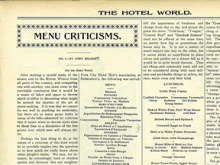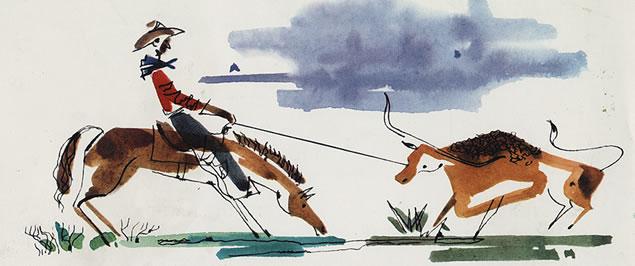Early Menu Format and Structure
Although there is a particular art and psychology involved in the design of modern day menus regarding structure and item placement (and a correspondingly large body of literature on the subject) for maximum profit, it is not clear whether late 19th-century or early 20th-century menus followed such exacting standards.

The classical menu (based on the French tradition) of this time followed an established format in terms of the cuisine it offered and the order in which it was presented, and this can be observed on the majority of menus in both the Bohn and Bettoni collections. Thus, there were seven to eight course offerings with a variety of items that generally followed this order: appetizer (hors d'oeuvre), soup, fish entrée, poultry or meat entrée, vegetable, salad, dessert, and finally an offering of cheeses or nut meats.
The language on the majority of menus from the Bettoni Collection are in French, the commonly accepted language of fine cuisine in the 19th century and indeed well into the 20th century in more elegant restaurants. Although most American menus in the Bohn Collection were in English, certain dishes were always listed in French or in the French fashion.
One question not easily answered with regard to these menus is pricing. As many of the menus in the Bettoni Collection were from special events, prices were not listed next to the various dishes. In other cases, menus from particular restaurants featured prices but others did not. Menus in the Bohn Collection did not prove any more illuminating as to pricing in the nineteenth century. Like the Bettoni Collection, menus for special events and holidays generally did not feature prices, and it did not seem common for most restaurants in the late 19th century to list prices. However, it might seem safe to assume using the menus in the Bohn Collection as evidence that adding prices to menus grew more commonplace as we moved into the twentieth century, and was probably widespread after the 1920s.

